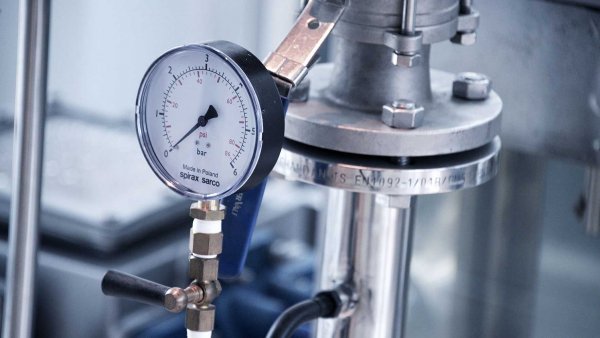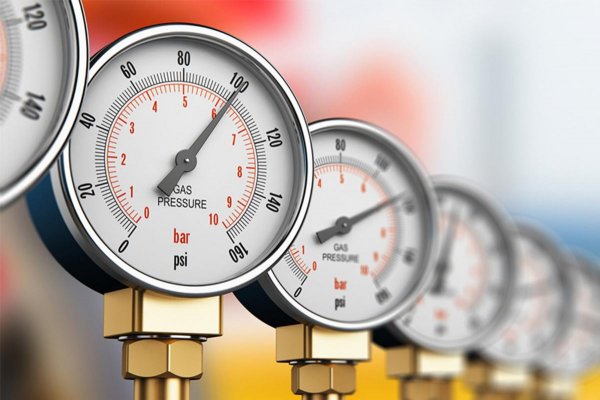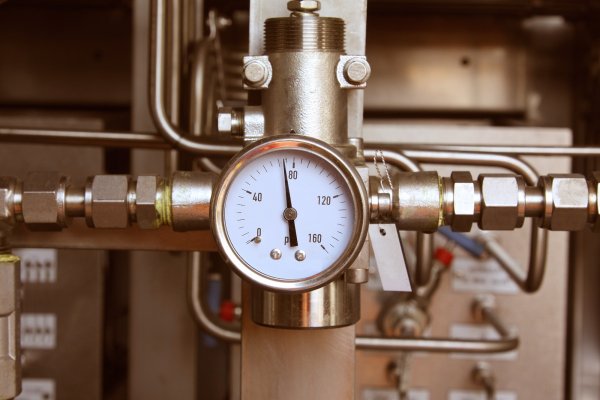How are pressure, vacuum and flow instruments set up?
The range of adjustment of pressure, vacuum and flow measuring instruments includes:
-
laboratory test;
-
checking the installation of a set of tools and pulse lines;
-
checking the installation of electrical connecting lines;
-
remote electrical transmission testing;
-
putting devices into operation;
-
checking instrument readings;
-
troubleshooting devices.
The scope of the laboratory examination includes:
-
visual inspection;
-
revision of the device;
-
checking the insulation resistance of live parts;
-
determining the main fault and changing the readings;
-
fault determination of signaling devices.
The scope of the overhaul, in addition to the above, includes filling the bell pressure gauges with separation fluid.
Before filling from the bell manometer, unscrew the screws and screw in their place the plug screws with gaskets supplied with the manometer.The manometer of the differential pressure of the bell is filled with dry transformer oil at the level of the indicator, and in its absence - at the level of the plug hole.
Determining the fundamental error and variation of instrument readings is done by comparing their readings with the readings of sample instruments or using deadweight gauges and manovacuum gauges.
Replaceable primary devices are checked in one of two ways:
-
the pressure (input signal) corresponding to the tested value is adjusted according to the device model OP1, the output signal is counted according to the device model OP2;
-
the calculated value of the output signal corresponding to the verified pressure value (input signal) is set according to the device model OP2, the actual value of the measured pressure is read using the device model OP1.
Secondary devices are checked as follows: the indicator of the device under test, by changing the input signal of mutual inductance or direct current, is set to the scale mark, the actual value of the input signal is read by the reference device and compared with the calculated value.
If the primary devices are operated in combination with separate secondary devices, a full inspection of the primary and secondary devices is permitted. The tolerable relative error of the set is equal to the root mean square of the tolerable relative errors of the primary and secondary devices.
The inspection of pressure gauges with a maximum pressure of up to 0.25 MPa inclusive is carried out using compressed air, an air press or a pump, installation with a sleeve.The specified pressure sources must provide a sufficiently smooth pressure change necessary to check the pressure gauges.
To check manometers with an upper limit up to and including 0.4 MPa, it is possible to use automatic manometers.
Manometers with an upper limit of measurement above 0.25 MPa, depending on the accuracy class, are checked using deadweight manometers or sample manometers using piston presses.
For filling the presses, dry transformer oil is used, and at pressure above 60 MPa, castor oil or technically refined oil of the first class. For electrical contact pressure gauges, the actuation of the contact devices is checked in the operating settings.
The manometric and vacuum parts of the manometer scale are checked separately.
Readings for indications of devices of accuracy classes 1; 1.5 and 2.5 are produced at at least five pressure values, accuracy class 4 — at least at three pressure values, including at atmospheric pressure and at a pressure equal to the upper measurement limit. The pressure values should be distributed evenly over the entire scale.
The number of marked marks on the manovacuum meters separately for each part of the scale is distributed in proportion to the length of the corresponding part of the scale. When checking manovacuumometers with accuracy classes 1.5; 2.5; 4 with the upper limit of overpressure measurements above 0.5 MPa, accuracy class 1 — more than 0.9 MPa, the readings of the vacuum part of the scale are not counted, only the movement of the arrow to this part of the scale is checked at reporting the vacuum pressure of the device in the range of 0 to 0.05 MPa.
The check is carried out by gradually increasing and then gradually decreasing the pressure. At a pressure equal to the upper limit of intentions, hold for 5 minutes (the example device is turned off during this time). The exposure of manovacuum meters is carried out under a pressure equal to the highest value of the upper limit of measurement.
When checking vacuum gauges with an upper limit of measurement of 0.1 MPa, it is necessary to fix the value of atmospheric pressure, holding under vacuum is carried out at a vacuum equal to 0.9 — 0.95 atmospheric pressure, while the value of vacuum is checks for the upper measurement limit.
Checking the basic error by comparing readings with standard instruments is done in one of two ways:
-
the pressure corresponding to the point on the scale of the instrument under test is adjusted according to the reference device, readings are taken according to the scale of the instrument under test;
-
the indicator of the checked device is adjusted by changing the pressure on the scale mark, the corresponding pressure is read by the reference device.
The actual value of the readings of a device model is determined according to the data specified in the certificate. Intermediate values are found by interpolation.
Installation of the needle on an example manometer or vacuum gauge is done by gently tapping it. When checking with a sample deadweight tester, the reading on the scale of the device under test is taken when the rod is immersed in the column to a depth of at least 2/3 of its length and as it rotates.It is recommended to determine the readings of the device under test without touching the body of the device.
The displacement of the needle of the manometer when lightly tapping on it should not exceed half of the permissible error. The reading of the readings during the inspection is carried out with an accuracy of 0.1 — 0.2 of the value of the division.
Differential pressure gauges are checked by comparing their readings with those of sample instruments. The method of applying the differential pressure is the same as described for checking the pressure gauges.
An air compressor is used to create a pressure drop above 0.25 MPa. A higher pressure is applied through the positive valve. When checking, the equalization valve is closed and the negative valve is open and connected to atmosphere.
Checking the installation of the pointer of the device to the zero mark of the scale is carried out at a pressure drop equal to zero, with the equalizing valve of the differential pressure gauge open.
The basic error is determined in at least five marks, evenly spaced along the scale, during forward and backward strokes. The check is carried out in one of two ways:
-
the indicator of the device, which is checked by changing the pressure difference, is placed on the mark of the scale, the actual value of the pressure difference is read according to the model of the device;
-
the calculated value of the pressure drop is adjusted according to a reference device, readings are taken according to the scale of the device under test.
The device meets its accuracy class if the error in any of the checked scales does not exceed the permissible value. When the input signal is zero, the error should not exceed half of the permissible value.
The adjustment of the manometers on the cuff consists in the adjustment of the kinematic transmission, carried out in accordance with the factory instructions.
The basic error of measuring devices is determined in the same way as for differential manometers-differential manometers.
The adjustment of the dial devices consists in the adjustment of the kinematic transmission.
Differential pressure flowmeters are checked by comparing the readings of the differential pressure manometers with the readings of sample instruments.
The error of the device is determined at flow rates equal to 0; thirty; 40; 50; 60; 70 and 100% of the upper limit of the measurements or close to them, for forward and reverse strokes.
When checking the installation of electrical connecting lines, pay attention to the correct connection of the electrical wiring to the primary and secondary devices, the condition of their insulation and the reliability of the connection of the plug connectors.



